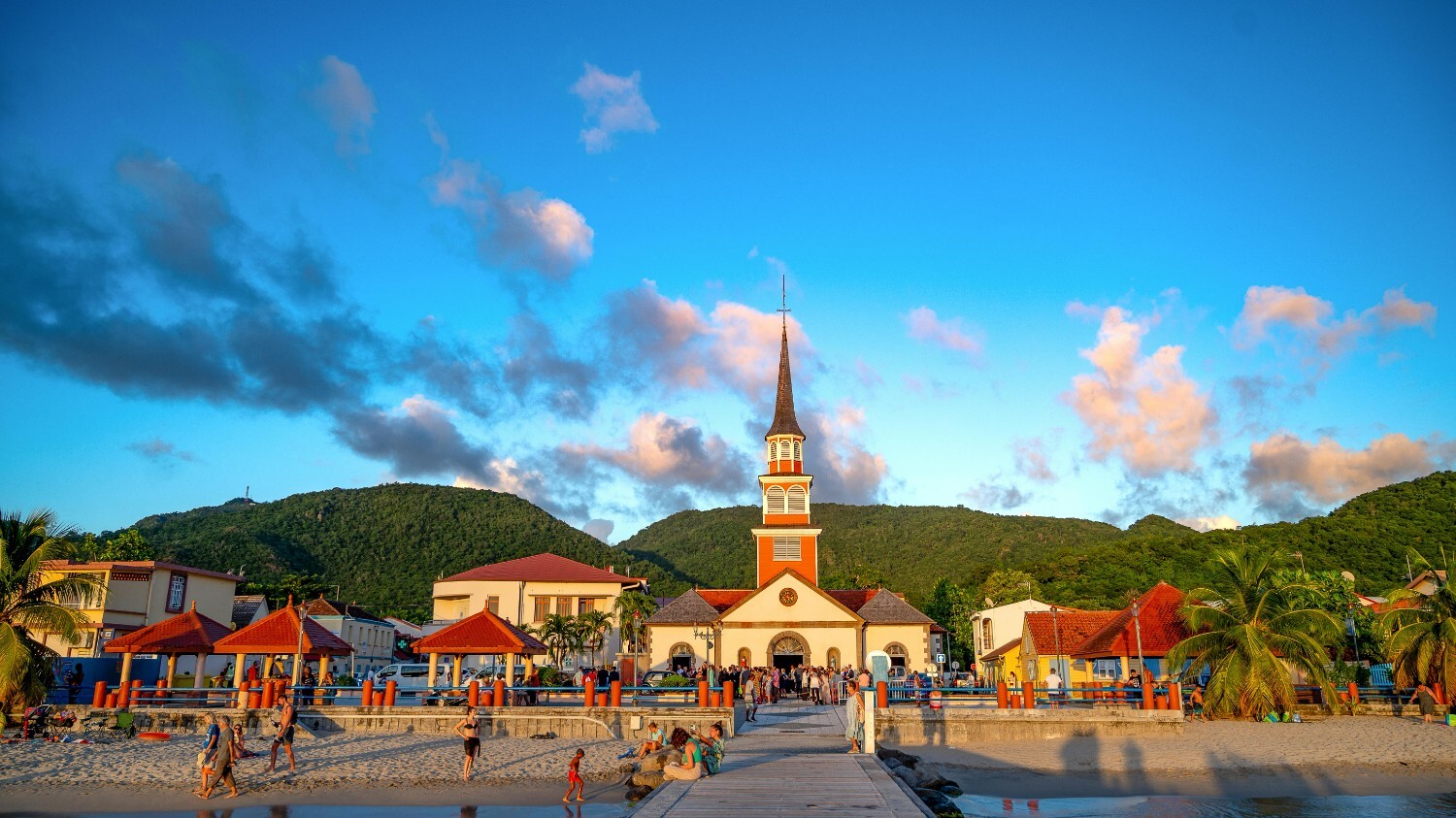
Fort Saint-Louis: The History of a Caribbean Fortress
The 17th-Century Context and the Protection of the Carénage Bay
The history of Fort Saint-Louis is closely linked to Martinique's strategic position in the Caribbean. From the 17th century onwards, European powers fiercely contested control of these sugar islands. For France, protecting the exceptional anchorage of the Carénage Bay, the future Fort-de-France, became an absolute priority. Construction of a first wooden fortification began in 1638, marking the birth of a stronghold that would constantly evolve. It's a fascinating chapter of local history, which you can explore in our guide to Fort-de-France.
The Major Stages of Its Successive Construction and Fortifications
The fort we know today is the result of nearly two centuries of work and improvements. Its evolution followed the progress of the art of poliorcetics (the art of siege warfare) and royal ambitions. Several major phases can be distinguished in its construction:
- Fort Royal (1672): Under the impulse of the governor at the time, the Marquis de Baas, the wooden fort was replaced by a true stone fortress, named Fort Royal.
- Vauban's Intervention (late 17th century): Although Vauban never came in person, his engineers applied his famous principles to reinforce the structure, giving it its characteristic star shape and making it much harder to storm.
- 18th-Century Additions: Throughout various conflicts, new bastions and ramparts were added to adapt the fortress to the increasing firepower of naval artillery. It was during this period that the fort reached its near-final form.
Fort Saint-Louis at the Heart of the Franco-English Conflicts
Its Decisive Role During the Seven Years' War
The 18th century was marked by a near-permanent rivalry between France and Great Britain for naval and colonial supremacy. Fort Saint-Louis, then called Fort Royal, was on the front line of these confrontations. During the Seven Years' War (1756–1763), Martinique was a prime target for the Royal Navy. The fort resisted a first British attack in 1759, proving the effectiveness of its fortifications. However, it finally fell into English hands in 1762 after an intense siege, before being returned to France the following year.
The Occupations and Restitutions That Marked Its History
The history of the fort is punctuated by wars and treaties. It would be captured by the British several times again, notably during the French Revolutionary Wars and the Napoleonic Empire. Each occupation left its mark, but the fort was systematically returned to France, firmly asserting French sovereignty over the island. It was in 1793 that it took its definitive name of Fort Saint-Louis, which it has retained to this day.
Tips and Information for Visiting Fort Saint-Louis in 2025
Guided Tour Routes: What Not to Miss
Today, Fort Saint-Louis has the particularity of being both a historical monument open to the public and an active naval base of the French Navy (Marine Nationale). For this reason, the visit must be conducted with a guide. This narrated tour is a unique opportunity to discover the fort's secrets. The highlights of the visit include:
- The ramparts and bastions, from where you will have an unbeatable view of the Bay of Fort-de-France.
- The Memorial of the Dissidence (Mémorial de la Dissidence), paying tribute to the Martinicans who fled the island to join Free France.
- The discovery of local fauna, notably the numerous iguanas basking in the sun on the walls.
Hours, Prices, and Conditions for Accessing the Naval Base
To prepare for your visit in 2025, it is essential to plan in advance. Visits are organized at fixed times, and the number of places is limited. We recommend checking the Fort-de-France Tourist Office website for precise schedules, especially during the summer season, and to book your slot. Identification may be requested at the entrance, as the site is a military zone.
Our B&B HOME, Minutes Away from a Historical Monument
Easily Reaching the Fort from Our Establishment
After soaking up the rich history of Fort Saint-Louis, you will appreciate the ease with which you can reach your resting place. Our B&B HOME in Fort-de-France is located only a few minutes' drive from the historic centre. This proximity allows you to plan your visit without transportation constraints, ensuring a quick and simple return to the comfort of your room.
Enjoying a Comfortable Stay to Explore Fort-de-France's Heritage
A cultural trip is often intense and rich in emotions. To fully enjoy it, quality accommodation is essential. Our modern, air-conditioned rooms offer you the ideal setting to relax after your explorations. It is the promise of restorative rest that will put you in optimal condition to discover all the other treasures we suggest for your stay in Martinique.
Key Takeaways on the History of Fort Saint-Louis
In conclusion, Fort Saint-Louis is much more than just a tourist attraction; it is a living page of Caribbean history. From its strategic origins to its role in the colonial wars, every stone tells an epic story. The guided tour is a must-do for any history enthusiast. By staying in our B&B HOME, you put yourself in the ideal conditions for a successful immersion in Martinican heritage.





























